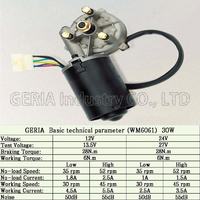c_mitra
Advanced Member level 6

AC motors do have less torque compared to DC motors but that is usually compensated by "oversizing", about 20-30%. AC motors have good speed stability, mostly locked to the line frequency. If you are using a regulator, it is essentially reducing the effective voltage and speed is controlled by allowing greater slippage. You can certainly use an AC motor but use a somewhat larger size


